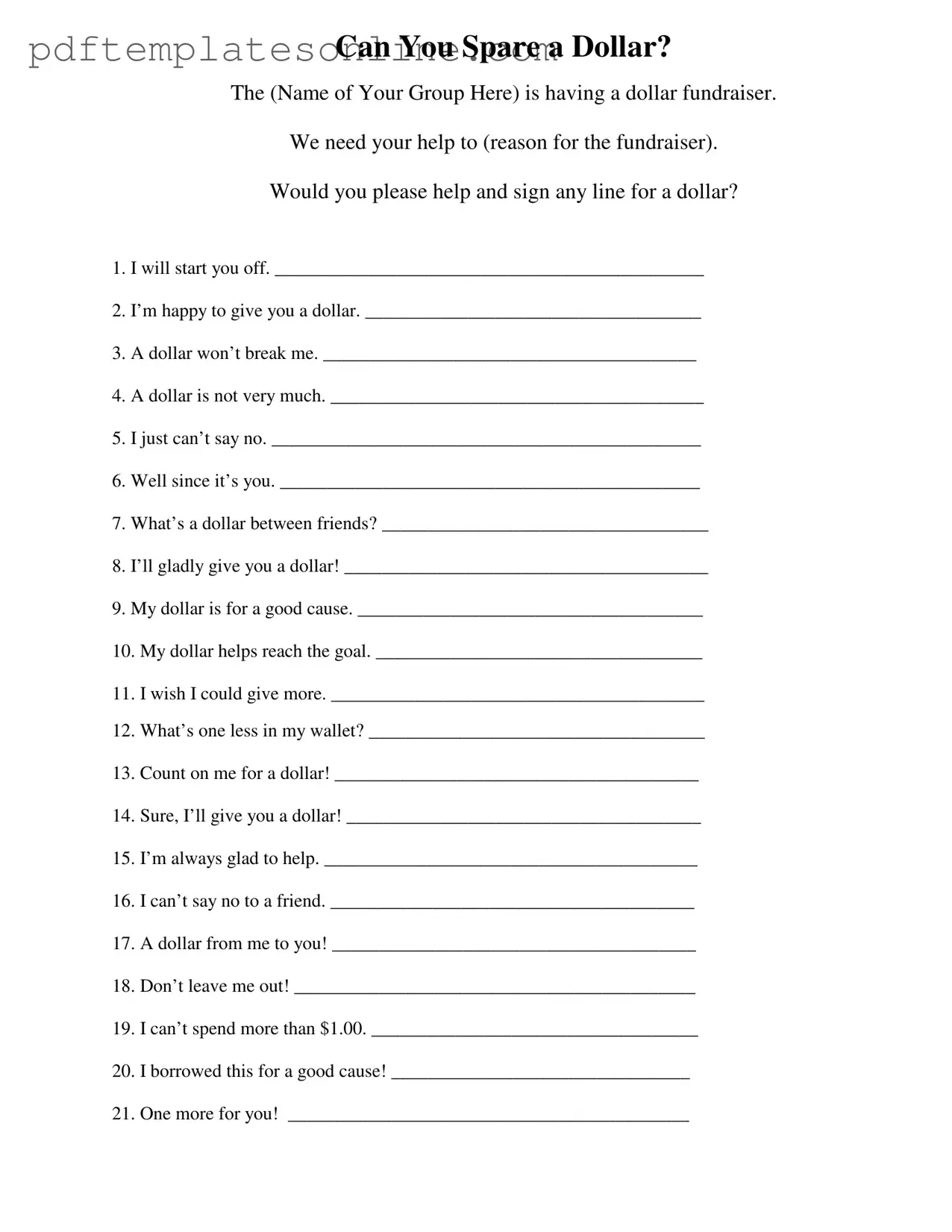When filling out the Donated A Dollar form, many people make common mistakes that can lead to confusion or even delay in processing donations. Understanding these pitfalls can help ensure that your contribution is counted correctly.
One frequent error is failing to include a name. The form clearly states, “NAME: _____________________________________________”, but some individuals overlook this section. Without a name, it becomes challenging for the organization to acknowledge your contribution or to keep track of donations.
Another mistake involves not providing the donation amount. While the form is designed for a single dollar contribution, some people mistakenly leave the amount blank or write in an amount other than one dollar. This can create confusion, as the intent of the fundraiser is to collect one-dollar donations.
People often forget to sign the form. The lines provided for signatures are essential for validating the donation. A missing signature can lead to complications in record-keeping and may result in the donation not being credited properly.
Additionally, some individuals do not specify where to turn in the form. The section “Please turn in to: ______________________________________.” is crucial for ensuring that the form reaches the right person or organization. Leaving this blank can delay the processing of donations.
Another common oversight is neglecting to indicate the reason for the fundraiser. The prompt “We need your help to (reason for the fundraiser).” is not just a formality; it helps donors understand the impact of their contribution. Failing to fill this out can diminish the emotional connection to the cause.
Lastly, some people may not take the time to read the entire form. Skimming through can lead to missed instructions or misunderstandings about the process. Taking a moment to review the form thoroughly can prevent mistakes and ensure that the donation is processed smoothly.
By being aware of these common mistakes, donors can help make the fundraising process more efficient and effective. A little attention to detail goes a long way in supporting a good cause.
